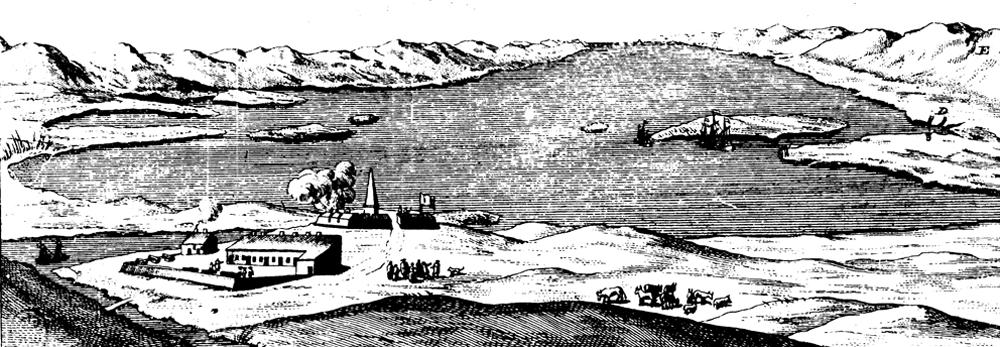|
In 1761 France ceded Canada to Britain and a young French nobleman, Antoine de Bougainville, bitter at the forced surrender of his fort at the loss of Quebec was shipped back to France along with other French officers on British ships. Eager for revenge against the British, he turned his mind to ‘Iles Malouines’.
At the end of January 1764 the French expedition, led and funded by Bougainville, and including a small party of Acadian settlers ( French speaking ex- inhabitants of east Canada, ousted by the British along with Bougainville), landed in the Falklands. By April 1764 a small rectangular fort was constructed of earth and peat sods. The settlement, on northeastern East Falklands, was named Port Saint Louis and the islands were claimed for France.
Antoine-Joseph Pernety who sailed with the expedition says of the two Acadian families one consisted of a husband, his wife and two children, a boy of three and a half years and a girl of about a year old, also two young women, sisters of the mother aged eighteen and nineteen. The other Acadian family consisted of a husband, his pregnant wife (ready to ‘lie in’), a son of four years old and the mother’s sister of 16 years. Other settlers included smiths, ironmongers, carpenters, joiners, masons, bricklayers, shoemakers, bakers, a captain of a ship and sailors. All lived under the same roof in apartments provided for them in the building erected near Fort St. Louis. Tools and ‘feeds of all kinds’ were left with them. They were expected to shoot to subsist. Besides provisions they left seven heifers, two young bulls, eight hogs and two boars, a few sheep, a goat, two horses and a mare. The livestock ranged about the country.
When the ship returned on its second voyage in 1764 Dom Pernety said that the climate and air appeared to be so wholesome and all the persons they had left behind had remained on the island of their own accord and with the soil being promising the there were hopes the colony would flourish. The population reached 75, there were three marriages and two babies were born. They were the first Falkland Islanders. De Bougainville, his family and 15 slaves lived in the stone Governor's house.
The French settlement disturbed both Britain and the Spanish government. Spain feared that the Falklands would be a rear base to threaten her Peruvian gold interests. In 1766 political expediency forced the French to accede to Spanish demands that France abandon the colony, which the Spanish claimed contravened the papal bull of 1494. The French government ordered Bougainville to sell the islands to Spain and this he did receiving the equivalent of 25,000 pounds.
In 1767, the Spanish, under the jurisdiction of the Viceroyalty of Buenos Aries, took over from the French naming the East Falklands Soledad (solitude) and Port Louis 'Puerto Soledad'. |

 Port Louis 1769 First buildings, fort, Church and houses, Bibliothèque nationale de France, Public Domain
Port Louis 1769 First buildings, fort, Church and houses, Bibliothèque nationale de France, Public Domain 